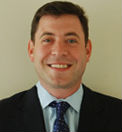 Michelle Obama’s Let’s Move campaign and recent Building a Healthier America Summit successfully highlighted the nation’s urgent need to solve its childhood obesity epidemic. One of the key solutions unveiled through the Let’s Move: Active Schools plan was the importance in investing more in physical education (PE) classes and out of school programs. The good news is that many effective and scalable PE and out-of-school-time youth sports programs exist especially though partnerships between schools and community-based organizations.
Michelle Obama’s Let’s Move campaign and recent Building a Healthier America Summit successfully highlighted the nation’s urgent need to solve its childhood obesity epidemic. One of the key solutions unveiled through the Let’s Move: Active Schools plan was the importance in investing more in physical education (PE) classes and out of school programs. The good news is that many effective and scalable PE and out-of-school-time youth sports programs exist especially though partnerships between schools and community-based organizations.
The challenge will be to ensure these initiatives are sustained and not marginalized as only useful to promoting student health and activity. Youth sports programs must also demonstrate their contributions to academic success and other desired youth outcomes.
There is a sad irony that Americans are the most inactive at a time when the public is watching and spending more on sports than ever before. (How are you doing in your March Madness bracket?) Yet the Centers for Disease Control and Prevention reports that 1/3 of U.S. kids are overweight or obese by third grade. The President’s Council on Physical Fitness asserts that only 4 percent of all elementary and 8 percent of middle schools offer daily PE classes. Only nine states require recess. All this follows recent Grad Nation and Opportunity Nation summits that asked many of the same leaders and groups to help solve America’s current high school drop-out and career readiness crises.
With so many priorities in a time of sequestration budget cuts, where will the time and resources to deliver the recommended 60 minutes of daily physical activity for millions more kids come from? OST programs provide one of the most logical and pragmatic answers. But policy makers, funders and program providers would be short-sighted to under-leverage this opportunity and the country’s passion for sports to fight obesity alone.
Harvard Medical School Professor John Ratay’s work (Spark: The Revolutionary New Science of Exercise and the Brain, 2008) is part of a growing scholarship that shows the correlation between daily physical activity and a child’s ability to learn. Evaluations of many OST programs have also shown it is the kids who receive a combination of exercise and academic support who show better grades, attendance and behavior than kids who receive strictly extra academic support.
Indeed, the last 15 years has seen tremendous growth in the emerging field of sports-based youth development and education. The national coalition Up2Us (www.up2us.org) represents 700 like-minded groups using sports as a hook to do even more for kids. Groups such as America Scores have kids playing soccer and writing poetry. Girls on the Run has young females learning to love running while being mentored by role models to develop leadership skills. Urban Dove created a whole new sports-anchored school in New York City to re-engage at-risk high school kids in their education and help them graduate. These initiatives differ from traditional versions of youth sports programs because their curriculum and staff intentionally promote more than just playing the sport.
At After-School All-stars, we recognized the need to do even more with our daily health and fitness hour. Several years ago, we launched our national “Sports as a Hook” curriculum to show how sports programs could be designed to better promote nutrition, service-learning, nature, leadership skills, mentoring, college and career exploration.
Many of the program goals can be seen in our flagship Camp Hoop Heroes initiative taking place this week at the Miami Heat practice facility. It is a free, week long, co-ed camp for 40 of our South Florida middle-school students and 40 adult mentors — none of whom are particularly great at basketball. Each day, students go through a two-hour basketball clinic with trained coaches running drills that re-enforce the day’s leadership theme, such as discipline, teamwork or resilience. Afterwards, volunteer mentors (college educated professionals in their 20s and 30s) join the kids after work for dinner, to play basketball and participate in classroom leadership activities.
They also hear from nightly guest speakers with non-playing sports careers such as Lebron James’ business manager, a high school coach, a Fox Sports TV executive, and the head of marketing for the Miami Heat. Each speaker highlighted how leadership lessons learned from sports helped them succeed in their jobs. They also helped answer the burning student question, “If I really love basketball but can’t make the NBA – what else can I do?”
Investing in out-of-school-time youth sports programs is one of the smartest strategies our nation can undertake to combat childhood obesity. But long-term public support for these efforts will only come if programs do much more than just getting kids to move.


























